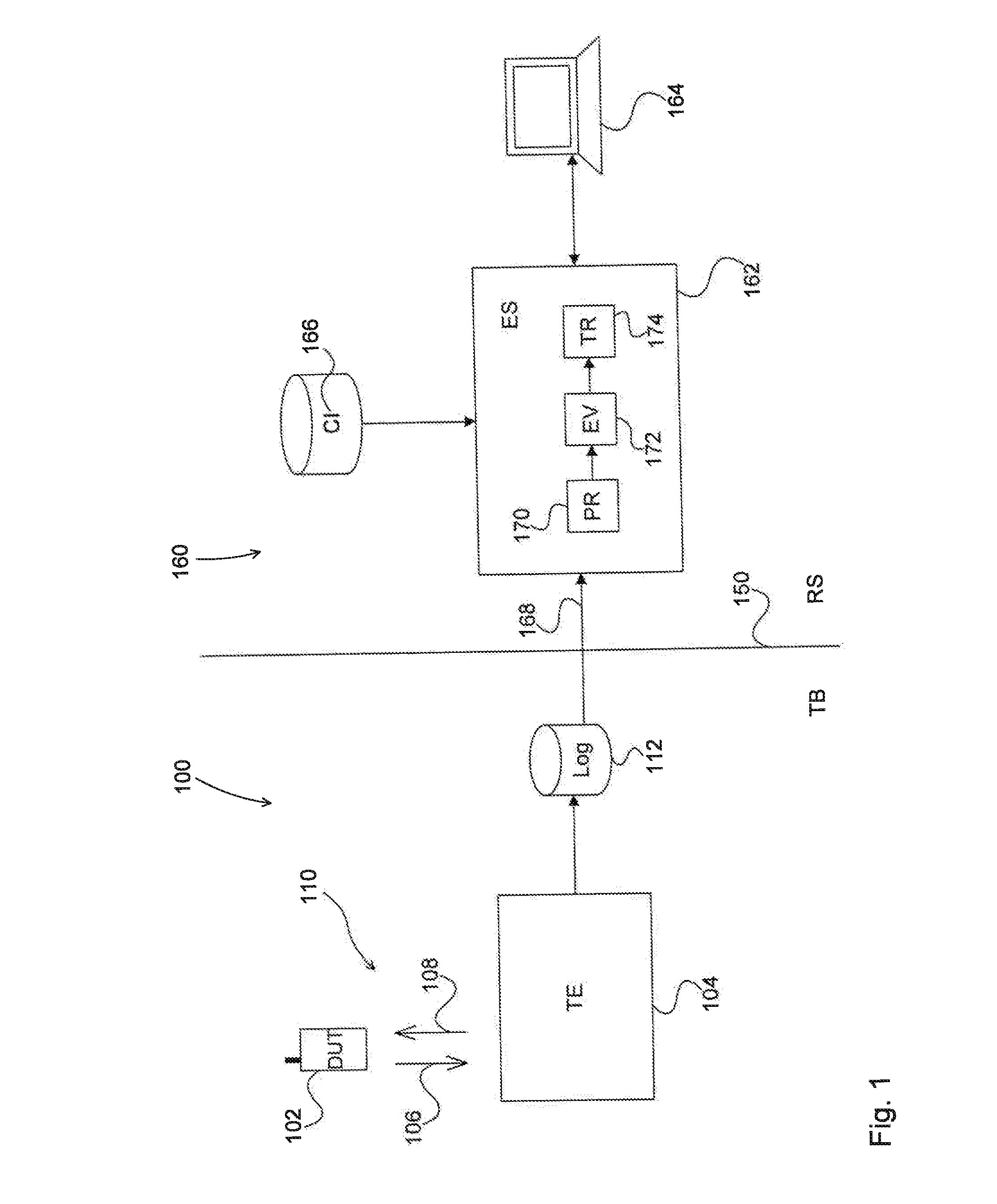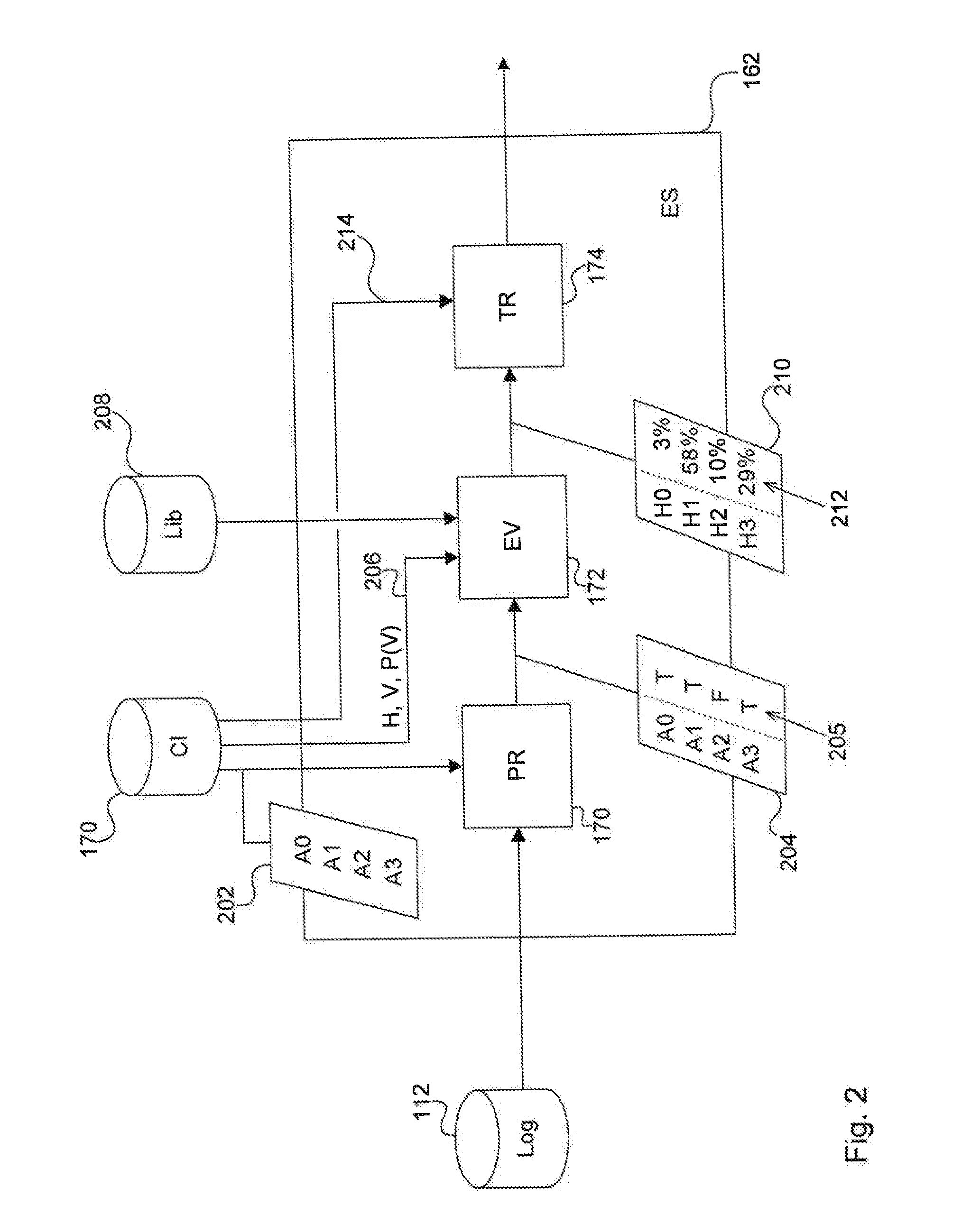Automated evaluation of test logs
a test log and automatic evaluation technology, applied in the direction of probabilistic networks, instruments, pulse techniques, etc., can solve the problems of difficult to draw inferences, difficult to determine, and high time-consuming analysis by human test personnel, so as to improve the efficiency of test evaluation and increase the reliability. , the effort for the preparation and matching of such frees is high
- Summary
- Abstract
- Description
- Claims
- Application Information
AI Technical Summary
Benefits of technology
Problems solved by technology
Method used
Image
Examples
Embodiment Construction
[0059]FIG. 1 visualises in schematic form an exemplary embodiment of a test system TOO and of a test evaluation system. (RS, “Reporting System”) 160. The test system 100 is a part of a test environment TB (“Testbed”) or respectively of a test laboratory such as is otherwise known to the person skilled in the art. The test system 100 comprises a telecommunications devise under test (DUT, “Device under Test”), in the example, a user device 102 for a mobile-radio network. The test system 100 further comprises a test equipment (TE, “Test Equipment”) 104.
[0060]A testing of the user device 102 comprises the transmission 106 of messages from the TE 104 to the DUT 102 and also the transmission 108 of messages from the DUT 102 to the TE 104. In this context, the message exchange 106, 106 runs via at least one interface 110, that is, for example, via an air interface. Via the interface 110, the TE 102 can emulate, for example, the behaviour of a base station of a mobile-radio network for this...
PUM
 Login to View More
Login to View More Abstract
Description
Claims
Application Information
 Login to View More
Login to View More - R&D
- Intellectual Property
- Life Sciences
- Materials
- Tech Scout
- Unparalleled Data Quality
- Higher Quality Content
- 60% Fewer Hallucinations
Browse by: Latest US Patents, China's latest patents, Technical Efficacy Thesaurus, Application Domain, Technology Topic, Popular Technical Reports.
© 2025 PatSnap. All rights reserved.Legal|Privacy policy|Modern Slavery Act Transparency Statement|Sitemap|About US| Contact US: help@patsnap.com



